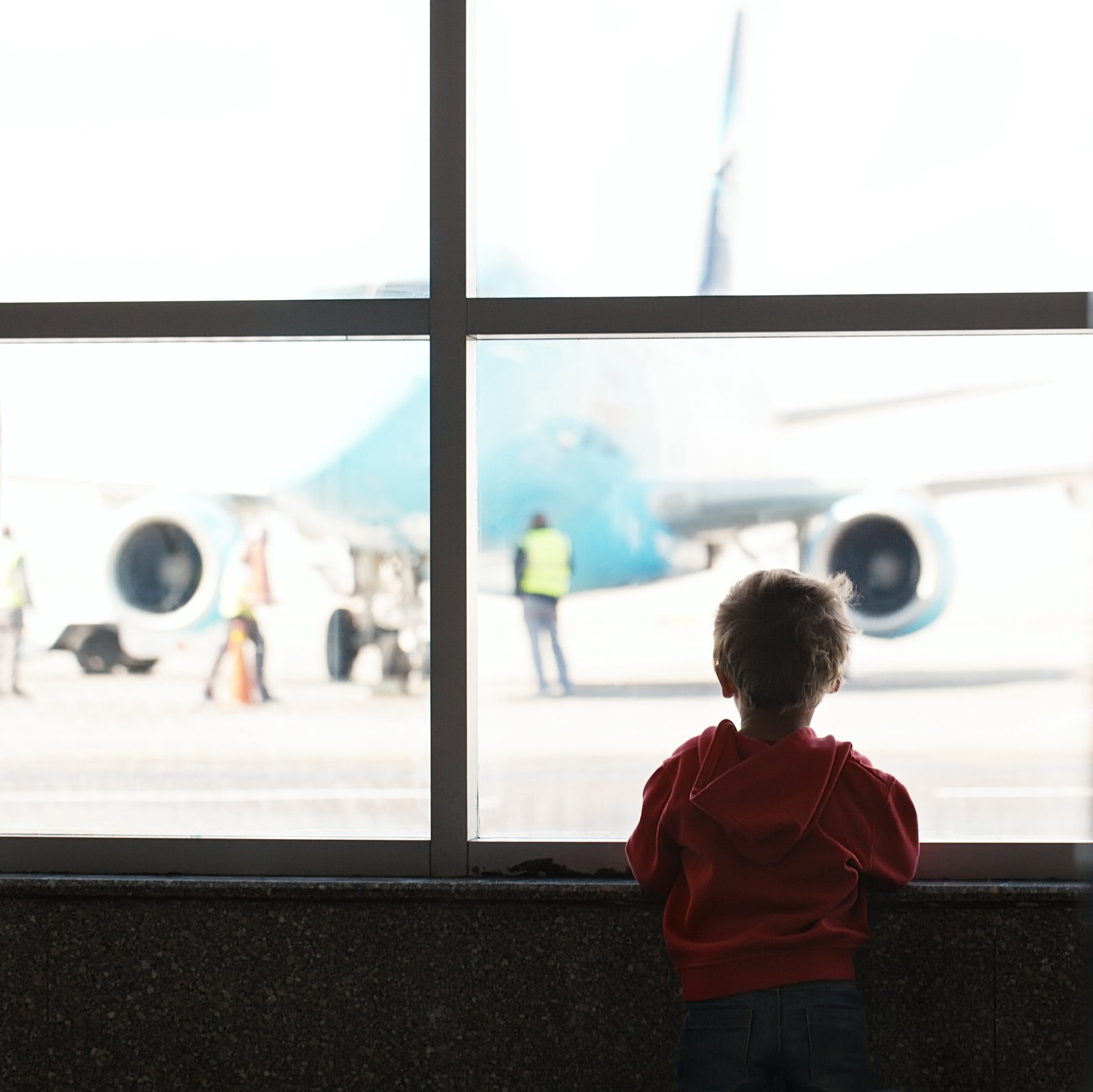Flight Schools
The Sky’s the Limit: Exploring the Future of Aviation Technology
As we soar into an era defined by rapid technological advancements, aviation is on the brink of a transformative leap. The future promises not just innovations in aircraft design and performance but also profound changes in how aspiring aviators are trained. For those eager to take to the skies, understanding the diverse pathways available through aviation schools can be a game-changer.
Aviation education is not one-size-fits-all; it encompasses various types of courses that cater to different interests and career goals. **Pilot training programs**, for instance, are often the most sought after. These typically include Private Pilot Certificates, Instrument Ratings, and Commercial Pilot Licenses. For those drawn to behind-the-scenes operations, **air traffic control courses** offer specialized training in managing air traffic safely and efficiently. Additionally, **aviation management programs** provide insights into the business side of flying—perfect for future executives looking to steer airlines or airports.
If your passion leans towards engineering or technology, consider enrolling in **aviation maintenance technician programs**. These courses dive deep into aircraft systems and maintenance protocols, ensuring safety remains paramount. Furthermore, with drone technology rising exponentially in popularity, many institutions now offer courses specifically focused on Unmanned Aircraft Systems (UAS). This exciting area is shaping up to be a cornerstone of modern aviation.

Navigating this educational landscape requires reliable resources to stay informed about industry trends and technologies. A plethora of aviation blogs and websites can offer insightful perspectives on everything from policy changes to emerging tech innovations. Some standout blogs include *AirlineReporter*, which keeps enthusiasts updated on airline news with a touch of humor and personal anecdotes. Meanwhile, *The Air Current* dives deep into industry analysis with expert opinions that can shape your understanding of the market.
Social media platforms also serve as vibrant communities for aviation lovers. LinkedIn groups focused on specific sectors—like commercial piloting or aerospace engineering—provide networking opportunities that could lead directly to job prospects post-graduation. Instagram features stunning imagery from pilots showcasing breathtaking views from above #AvGeek style; follow accounts like @FlyingWithFish or @FlightChops for daily inspiration!
For hands-on experience essential for becoming a skilled pilot or technician, pursuing an FAA-approved flight school is critical. Many flight schools across the country meet rigorous standards set by the Federal Aviation Administration (FAA), ensuring students receive top-notch training in both practical skills and safety protocols. Schools like *ATP Flight School* offer accelerated programs designed for those who want to earn their licenses swiftly while still being thorough in their instruction.
In addition to traditional flight schools, innovative simulator training facilities have emerged as vital resources for developing skills without leaving the ground. Advanced simulators replicate real-world flying conditions without risking lives or aircraft; they allow students to practice emergency procedures extensively before taking off solo.
As we look ahead at all these developments within aviation education and technology—whether it’s through traditional schooling methods or cutting-edge simulation—it’s clear that we’re only beginning our journey toward redefining what it means to fly.

In conclusion, whether you’re aiming high as a pilot or grounded in management roles within aviation industries, there’s no shortage of paths to explore—the sky truly is limitless! Embrace these opportunities as they unfold—they might just pave your way toward soaring success!
Sky’s the Limit: Exploring the Most Iconic Aircraft of All Time
Aviation has captivated humanity for over a century, transforming dreams of flight into tangible reality. From the Wright brothers’ first powered flight to modern supersonic jets, the journey through aviation history is nothing short of remarkable. But as we reflect on these iconic aircraft, we also recognize the importance of education and community in shaping future aviators. Let’s dive deeper into aviation schools, resources available online, and FAA-approved training programs.
### Aviation Schools: Navigating Your Path
When it comes to pursuing an aviation career, educational institutions offer a variety of courses tailored to different interests. Generally, aviation schools can be categorized based on their specialized programs:
1. **Pilot Training Schools**: These institutions focus primarily on preparing students for piloting careers. Courses typically include Private Pilot License (PPL), Commercial Pilot License (CPL), and Instrument Rating.
2. **Aviation Maintenance Programs**: For those interested in the technical side of flying, these programs teach essential skills for aircraft maintenance and repair. Students learn about airframe and powerplant mechanics among other disciplines.
3. **Aerospace Engineering Courses**: These are ideal for individuals fascinated by designing aircraft or spacecraft. Curriculum often covers aerodynamics, propulsion systems, and materials science.
4. **Air Traffic Control Training**: Catering to aspiring controllers, these courses delve into navigation systems and traffic management protocols necessary for ensuring safe skies.
5. **Flight Attendant Training Programs**: Tailored towards customer service in aviation, these classes prepare students for safety procedures and passenger management.
By mapping out your goals within these categories, you can select a course that aligns perfectly with your aspirations in aviation.
### Online Resources: Connecting Aviators Worldwide
With the digital age at our fingertips, finding reliable information about aviation has never been easier. Here are some popular blogs and websites where enthusiasts can learn more or connect with others who share their passion:
**Airliners.net**: This platform is home to a vibrant community where users share photos and stories related to commercial airlines.
**Flying Magazine**: A staple in aviation journalism that covers everything from pilot training tips to reviews of new aircraft.
**Plane & Pilot Magazine**: This site focuses on general aviation topics with useful articles about flying techniques and equipment.
**AvGeekery.com**: Bringing together avid fans of all things aerospace, this blog showcases news updates along with unique historical insights.
Social media platforms such as Instagram or Twitter also foster communities around specific aircraft types or flying experiences using trending hashtags like #AvGeek or #PilotLife.
### FAA Flight Schools & Simulators
For serious aspirants ready to take off into their flying careers, choosing an FAA-approved school is crucial. The Federal Aviation Administration ensures that training meets rigorous standards across various programs:
1. **FAA Part 61 Schools** offer flexible training schedules tailored for both part-time learners or full-time students seeking quick licensure.
2. **FAA Part 141 Schools**, on the other hand, provide structured courses with defined curricula—ideal for those looking at professional pilot pathways.
Many airports now feature state-of-the-art simulators allowing you to experience flight without leaving Earth’s surface! These simulators replicate real-world conditions while providing invaluable hands-on experience before taking command of an actual aircraft.

In conclusion, whether you dream of soaring through the clouds as a pilot or prefer maintaining the machines that make it all possible—aviation offers countless opportunities waiting just above us! Embrace your passion; after all—the sky’s truly the limit!
Onboard Experience: What It’s Really Like to Fly First Class
When it comes to flying, there’s a world of difference between the cramped quarters of economy class and the plush comforts of first class. But what really sets this elevated experience apart? Beyond the sumptuous seats and gourmet meals, first-class travel embodies an entire ecosystem of aviation excellence that begins long before you step onto the plane.
To understand this, let’s take a peek behind the curtain at the educational landscape shaping future pilots and aviation professionals. Aviation schools come in various forms, each offering unique courses tailored to different career paths. For aspiring pilots, flight training programs are fundamental. These schools provide hands-on instruction in both actual aircraft and simulators, teaching everything from basic maneuvers to advanced navigation techniques. When seeking FAA-approved flight schools, it’s vital to check their accreditation and curriculum offerings; many renowned institutions offer specialized courses like instrument ratings or multi-engine operations.
But it doesn’t stop there! Aviation encompasses a wide range of careers beyond piloting. Many institutions offer programs in aviation management, air traffic control, aerospace engineering, and maintenance technology. Students can immerse themselves in topics such as aviation safety regulations or airline operations, positioning them for diverse roles within the industry.
For those looking for insights beyond formal education, numerous blogs and websites cater to aviation enthusiasts and professionals alike. Sites like **Airliners.net** and **FlightAware** provide real-time data about flights around the globe along with community forums where users share experiences and advice. Social media platforms have also become crucial for networking; Twitter is abuzz with hashtags like #AvGeek or #PilotLife where followers can connect with aviators sharing tales from their personal journeys through the skies.
Next up on our exploration is one of the cornerstones of modern aviation training: simulators. Advanced flight simulators have revolutionized how pilots train today—offering immersive experiences that mimic real-world scenarios without leaving solid ground. These high-fidelity systems allow trainees to practice emergency procedures or complex maneuvers safely while gaining invaluable insights into cockpit dynamics. The benefits don’t just extend to pilot training; they’re also used extensively for cabin crew simulations ensuring everyone knows how to handle unexpected situations onboard.
Now back to that luxurious first-class experience! Let’s paint a picture: upon entering a first-class cabin, passengers are greeted with smiles from attentive staff eager to ensure comfort throughout the journey. Spacious seating allows room for relaxation—or work—complete with adjustable reclining options that transform into fully flat beds when needed. Dining becomes an event rather than just sustenance; expect chef-prepared meals served on fine china alongside premium beverages.

Amenities such as noise-canceling headphones enhance your auditory experience while personalized service means you’ll rarely need anything twice—the crew remembers preferences that make every passenger feel special during their flight.
In conclusion, flying first class isn’t just about enjoying lavish perks; it symbolizes years of hard work by countless individuals trained through diverse educational avenues in aviation schools worldwide. With dedicated resources available online—be it blogs or social media communities—and cutting-edge technology like flight simulators propelling training forward, both aspiring aviators and seasoned travelers can appreciate not only what goes into crafting an exquisite onboard experience but also how interconnected our love for flight truly is!

From Gliders to Jets: A Journey Through Aviation History
Aviation, a marvel of human ingenuity, has transformed the skies from simple gliders to sophisticated jets. This journey through aviation history is not just about technological advancements; it’s also about education and community. Whether you’re an aspiring pilot or simply intrigued by flight, understanding the various facets of aviation can be quite enlightening.
*Aviation Schools by Types of Courses**
Enrolling in an aviation school is a critical step for anyone looking to take to the skies. Various types of courses cater to different interests within the field. Here’s a breakdown:
1. **Pilot Training Programs**: These are designed for those aiming to become licensed pilots. They cover everything from private pilot licenses (PPL) to commercial and airline transport pilot licenses (ATPL).
2. **Aircraft Maintenance Programs**: If engines and airframes excite you, these courses teach how to maintain aircraft safely and efficiently. Students learn about systems, repair techniques, and regulatory compliance.
3. **Aeronautical Engineering Degrees**: For those drawn towards innovation behind aircraft design, aeronautical engineering courses delve into aerodynamics, propulsion systems, and structural analysis.
4. **Air Traffic Control Training**: Aspiring air traffic controllers can find specialized programs that prepare them for managing flights safely within controlled airspace.
5. **Drone Pilot Certification**: The rise of unmanned aerial vehicles has led to a surge in demand for drone pilot training programs focusing on regulations and operational skills.
Each type of course offers unique insights into the vast world of aviation while equipping students with essential skills needed in their chosen path.
*Lists of Aviation Blogs, Websites, Social Media Sites**
The aviation community thrives on sharing knowledge and experiences through various platforms. Here are some must-visit blogs and websites:
**The Points Guy**: Focused on travel tips, credit card rewards related to airlines.
**Airline Reporter**: Offers insights into airline industry news along with reviews.
**Flying Magazine Blog**: A treasure trove for pilots featuring tips on flying techniques.
**Jetwhine**: Covers topics ranging from airline operations to safety issues.
For social media enthusiasts:
Follow hashtags like #AvGeek on Twitter and Instagram for stunning photos and discussions.
Join Facebook groups such as “Pilots Without Borders” or “Flight Simulation Enthusiasts” where members share advice and experiences.
These online spaces foster camaraderie among aviation lovers while helping newcomers navigate their way through this exciting sector.
*FAA Flight Schools/Airplane Schools/Simulators**
The Federal Aviation Administration (FAA) plays a vital role in certifying flight schools across the United States that meet stringent safety standards. When searching for FAA-approved schools, consider factors such as location, curriculum offerings, instructor qualifications, and fleet condition.
Additionally, many flight schools incorporate simulators into their training programs—an excellent way for students to practice maneuvers without leaving the ground! Simulators provide realistic environments where potential pilots can hone their skills effectively before taking off in real aircraft.

Some well-regarded FAA-certified flight schools include:
1. **Embry-Riddle Aeronautical University**
2. **ATP Flight School**
3. **Purdue University**
4. **Florida Institute of Technology**
Choosing the right school can set you on an exciting path filled with opportunities in this ever-evolving industry.
In conclusion, from early gliders that floated gently through the air to today’s high-speed jets soaring above clouds — aviation continues its remarkable journey fueled by innovation and education. By exploring various educational avenues available today—from specialized courses at accredited schools to engaging blogs—the sky truly is not the limit; it’s merely the beginning!
Passenger Experience in the Skies: Trends Shaping Modern Air Travel
In an era where technology and innovation intertwine, the aviation industry is undergoing a significant transformation. As travelers embark on their journeys, the passenger experience is being elevated through various trends that focus on comfort, efficiency, and engagement. From the educational pathways leading to careers in aviation to the wealth of information available online, let’s explore how these elements are shaping modern air travel.
*Aviation Schools: A Diverse Array of Courses**
For those aspiring to soar through the skies professionally, aviation schools offer a plethora of courses tailored to diverse interests. From pilot training programs to aircraft maintenance and air traffic control training, there is something for everyone.
1. **Flight Training Programs** – These are perhaps the most recognized courses, focusing on developing skills for piloting small planes all the way up to commercial jets. Students learn about navigation, meteorology, and flight safety.
2. **Aircraft Maintenance Engineering** – For those fascinated by machines rather than flying them, this program delves into maintaining and repairing various types of aircraft. Graduates ensure that planes meet safety regulations before take-off.
3. **Air Traffic Control (ATC)** – This specialized course trains individuals to manage airport traffic effectively and safely coordinate flights within controlled airspace.
4. **Aviation Management** – Combining business acumen with aviation knowledge, this field prepares students for leadership roles within airlines or airports.
5. **Drone Operations** – With drones becoming an integral part of logistics and photography industries, many schools now offer focused programs on UAV piloting and regulations.
These varied educational routes not only prepare students for specific careers but also contribute significantly to enhancing passenger experiences by ensuring safety and operational efficiency.
*Top Aviation Blogs and Websites**
In today’s digital age, staying informed about aviation trends has never been easier thanks to numerous blogs and websites dedicated to this dynamic field:
**Airliners.net** – A comprehensive platform featuring discussions on aviation news and a vast photo database of aircraft from around the world.
**The Points Guy** – Focused on maximizing travel rewards points while navigating frequent flyer programs; it’s a must-read for savvy travelers looking for value.
**Simple Flying** – This blog provides daily updates on airline news, including fleet changes and route announcements that directly affect passengers.
**Flying Magazine** – Offering insights into pilot experiences along with tips for aspiring aviators.
Social media platforms also play a pivotal role in connecting enthusiasts:
Twitter accounts like @FlightAware provide real-time flight tracking updates.
Instagram hashtags such as #aviationlovers showcase stunning aerial photography that captivates both hobbyists and professionals alike.
*FAA Flight Schools: The Gold Standard**
When it comes to formal flight education in America, FAA-certified schools hold a prestigious status. These institutions follow rigorous guidelines set by the Federal Aviation Administration (FAA) ensuring high-quality training standards.

Additionally, simulators have revolutionized pilot training by providing realistic environments without leaving the ground. Advanced technology allows future pilots to hone their skills in safe yet challenging scenarios before taking command of real-world flights.
In summary, as we navigate through modern air travel’s enhancements—be it through educational advancements or informative resources—the passenger experience continues evolving dramatically. With every new trend arising from technological innovations or shifts in consumer behavior, one thing remains certain: flying will be more accessible, enjoyable, and informed than ever before!




